Waitomo Caves
Our first destination was the Waitomo Caves. We explored 3 different caves throughout the day starting with Waitomo Glowworm Cave. If you only see one, this is the one! Clusters of glowworms cling to the walls around you while walking through the cave, but the best part is the boat ride on the river within. The boat glides out through the silent darkness and into a mystical starry blackness. The glowworms cover the ceiling and sides of the cave, shining like bright blue, white, and turquoise stars all around you. I haven’t found any picture that does it justice.
The second cave we visited was Ruakuri, which provided a chance to see these worms up close and an attempt to photograph them. These creatures live about 11 months, 9 as a glowworm. They glow to attract insects which get caught in the lines that hang from them. They then pull the insect in to devour them. When they emerge, they live as flies for 5 days to reproduce. These flies have no mouth or stomach, which poses a bit of an issue and they starve to death. If you look closely, you can see the lines hanging from the blue glowworms in the picture below.
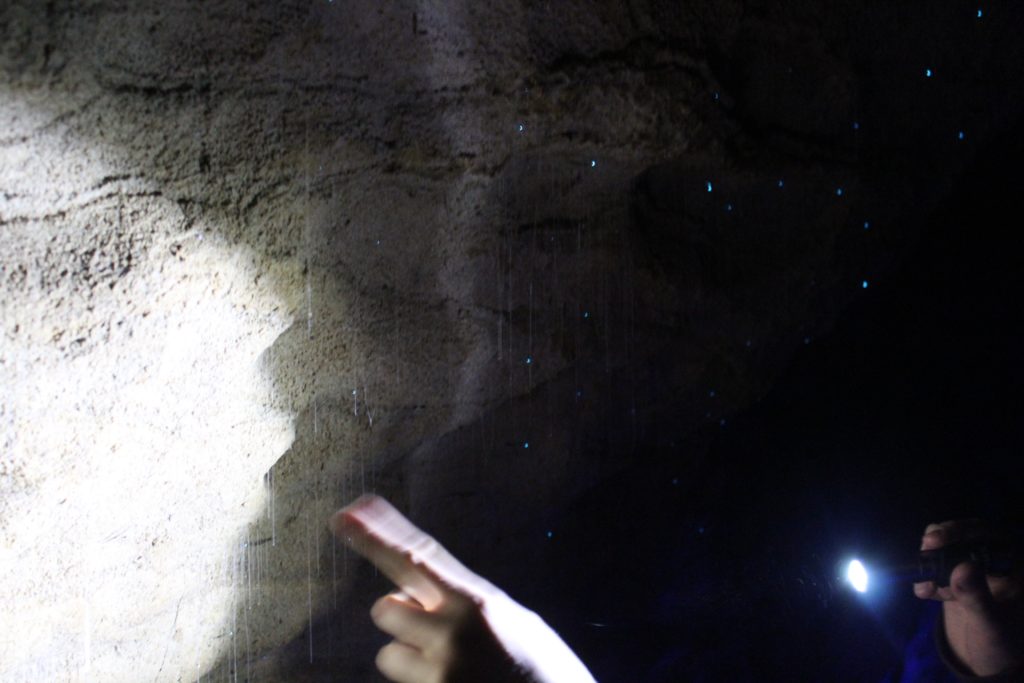
Aranui (our final cave) has no glowworms. Instead it is filled with beautiful stalagmites and stalactites.
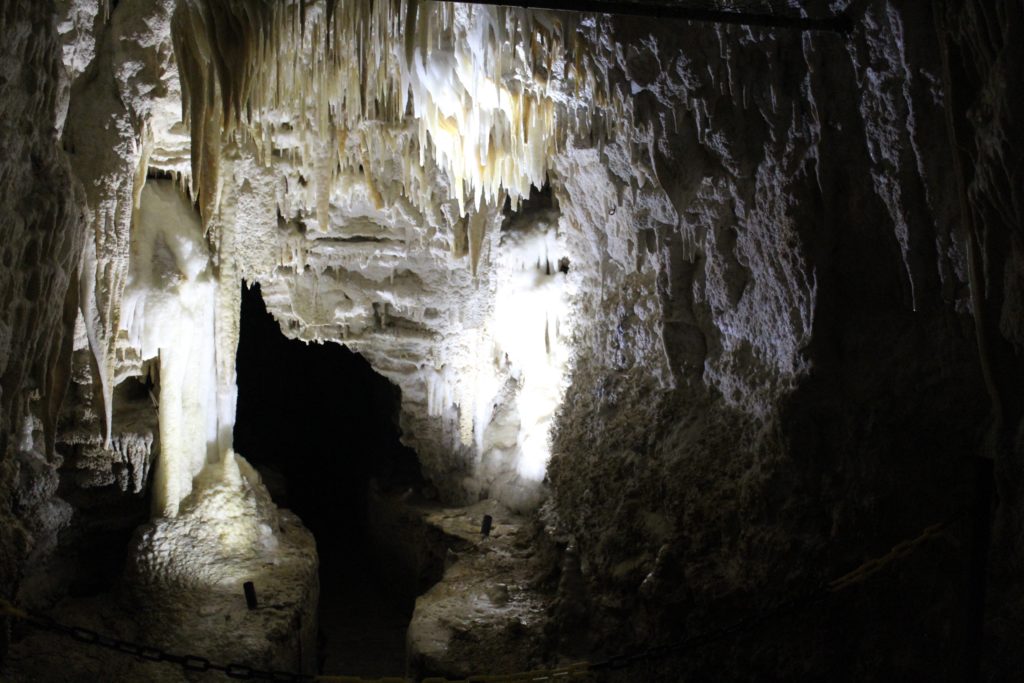
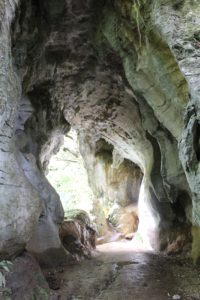
There are also trails to hike around the caves in the temperate forest. Our hike revealed rivers, small caves, natural tunnels, and moss covered trees.
Wai-O-Tapo
If you only have time to see one geothermic park, I would recommend Wai-O-Tapo over Waimangu Volcanic Valley. There’s a well laid out trail through the park, passing craters with gas steaming up from the rumbling centers, silt terraces, and bubbling mud pools.
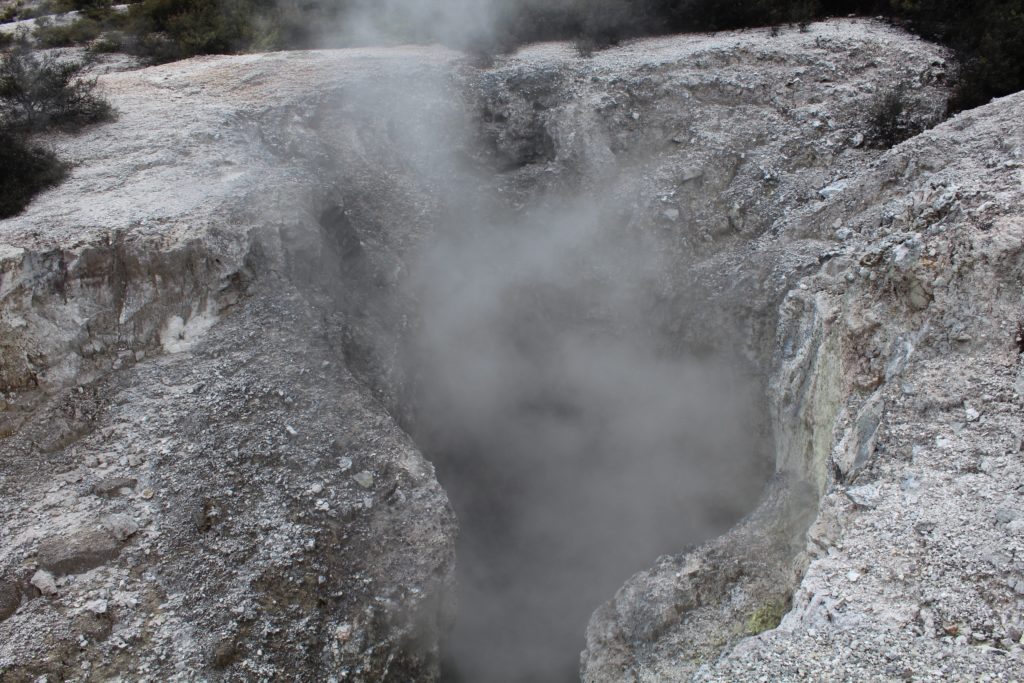
On one end of the park sits the enticing green Lake Ngakoro. Gold moss covers trees in some areas of the park as if they were spray painted.
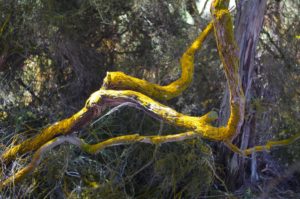
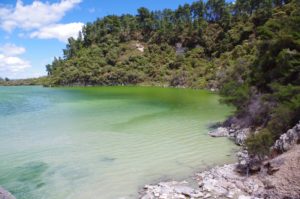
The highlight of the day was champagne pool. I could have stared at this for hours! The pool has small bubbles constantly rising to the surface like champagne caused by carbon dioxide and steam rising from it.
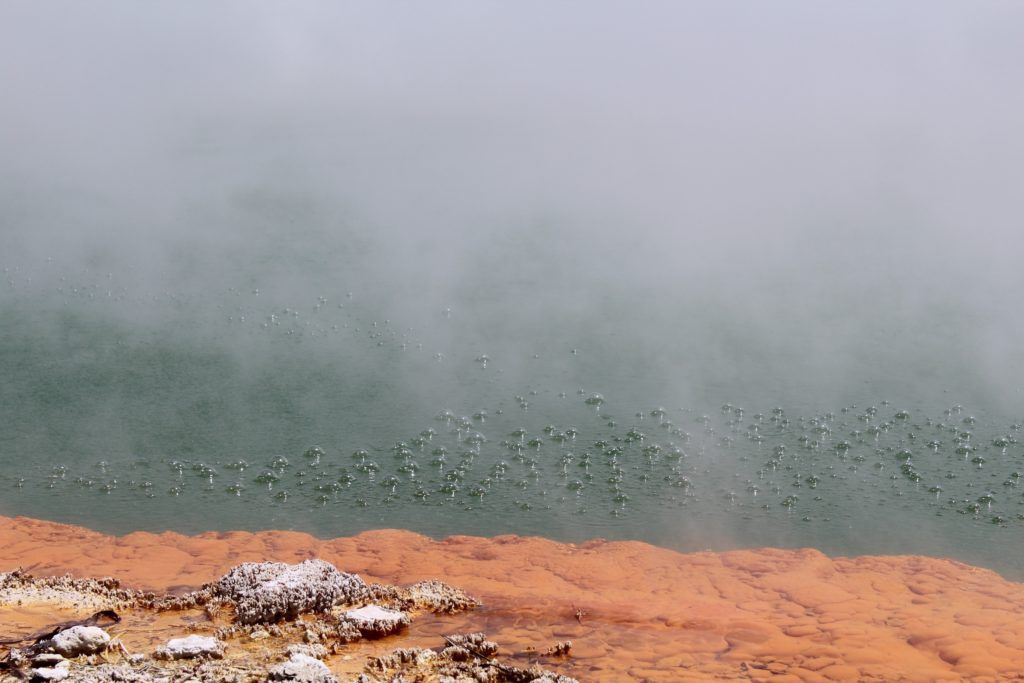
The best part of visiting this pool is how the wind interacts with the massive amounts of steam. I was entranced watching this phenomenon. The steam circles above the water, then comes towards you and engulfs you, and moments later it all gets pulled out opening up a view of the water in front of you. This continues in all sorts of sequences.
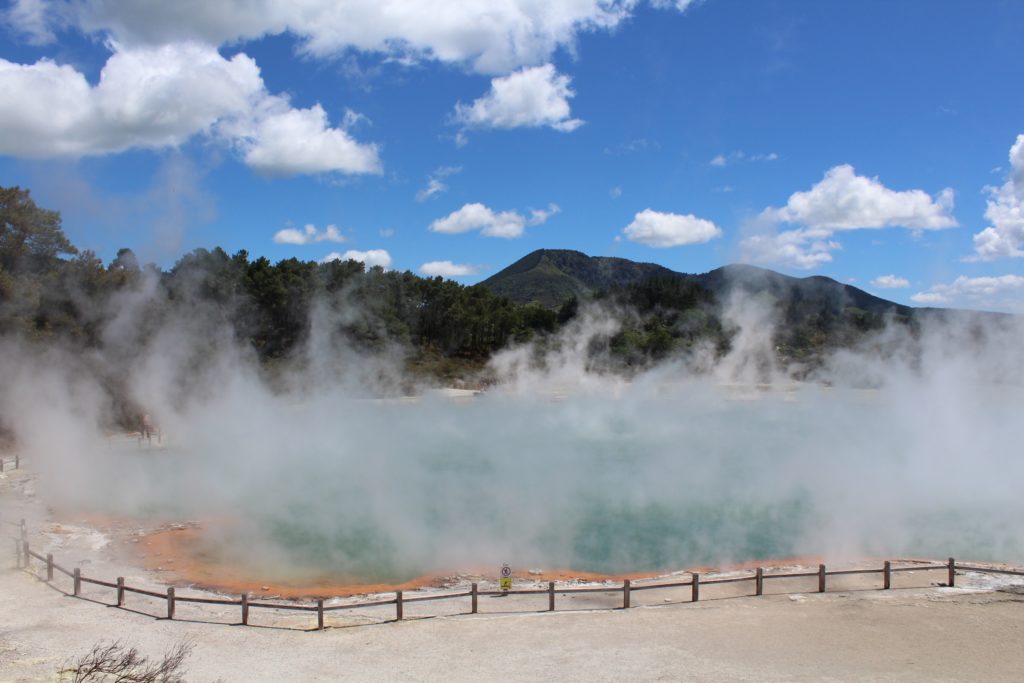
Another highlight is the final pool you pass, the Devil’s Bath. This crater holds sci-fi dark green water caused by the mixing of excess water from Champagne Pool with sulphur and ferrous salts.
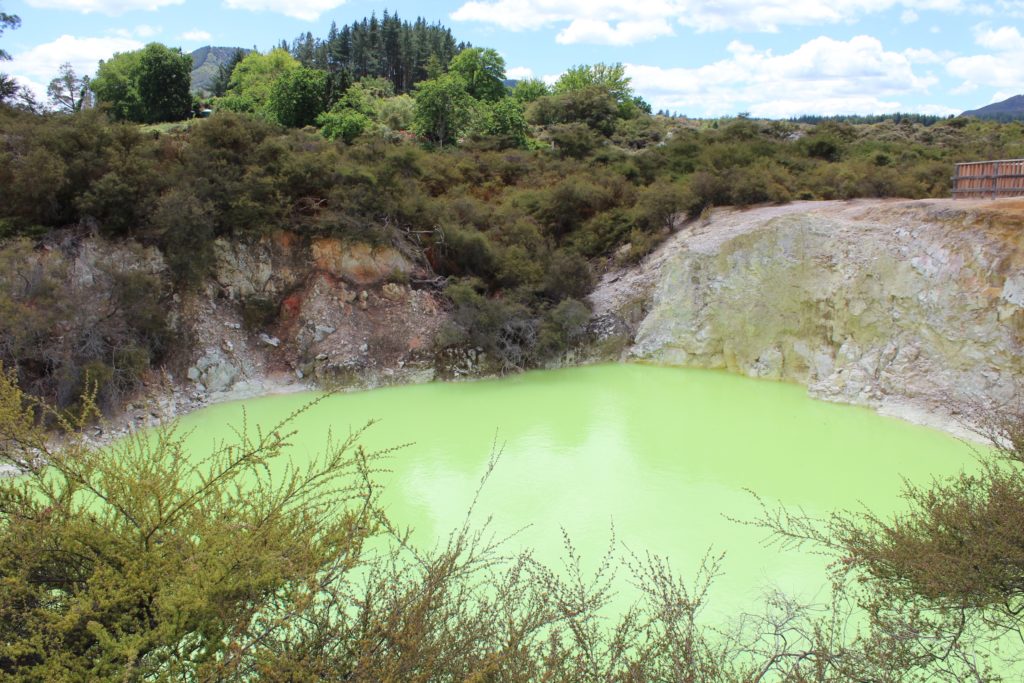
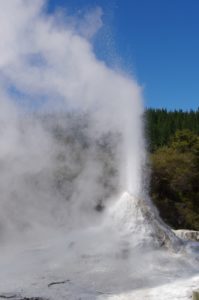 Helpful hint: If you have seen a geyser before you may want to skip the Lady Knox Geyser which goes off every day at 10:15 am. Turns out a ranger puts surfactant into the geyser to make it go off at the designated time. If they didn’t do this it would naturally go off but no one would know when to watch it. If you skip this, you will have the park mostly to yourself for exploration. Once the geyser has gone off, all those tourists watching it head to their cars and into the park at the same time, leading to a more crowded park experience.
Helpful hint: If you have seen a geyser before you may want to skip the Lady Knox Geyser which goes off every day at 10:15 am. Turns out a ranger puts surfactant into the geyser to make it go off at the designated time. If they didn’t do this it would naturally go off but no one would know when to watch it. If you skip this, you will have the park mostly to yourself for exploration. Once the geyser has gone off, all those tourists watching it head to their cars and into the park at the same time, leading to a more crowded park experience.
Waimangu Volcanic Valley
Waimangu Volcanic Valley is the youngest geothermic ecosystem in the world. It was created by an eruption in 1886 which destroyed all plant and animal life. It is filled with hot springs, mud pits, and boiling streams.
Inferno Cater Lake is a beautiful, icy blue, steaming lake that follows cycles of overflow and receding water levels. While it looks like a great place to take a swim, it’s actually quite hazardous. Temperatures here can reach 80°C (176°F) and the pH can be as low as 2.1!
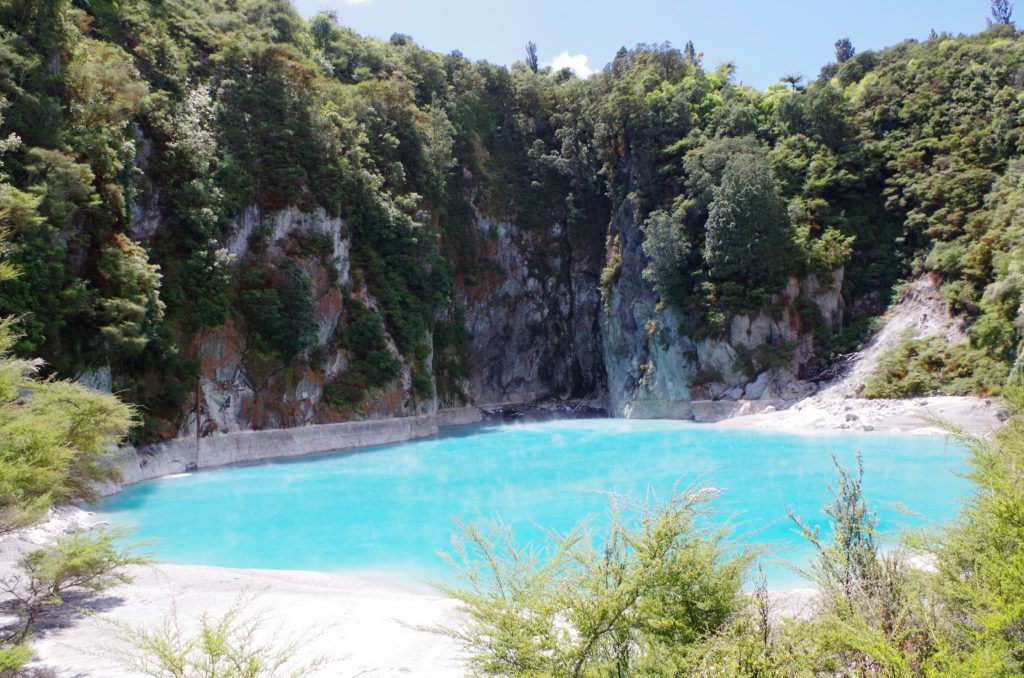
Frying Pan Lake was created after a crater erupted in 1917. It is the largest hot spring in the world. Its average temperature is 55°C (131°F) with carbon dioxide and sulphide gas bubbling up to the surface and steam gliding across it.
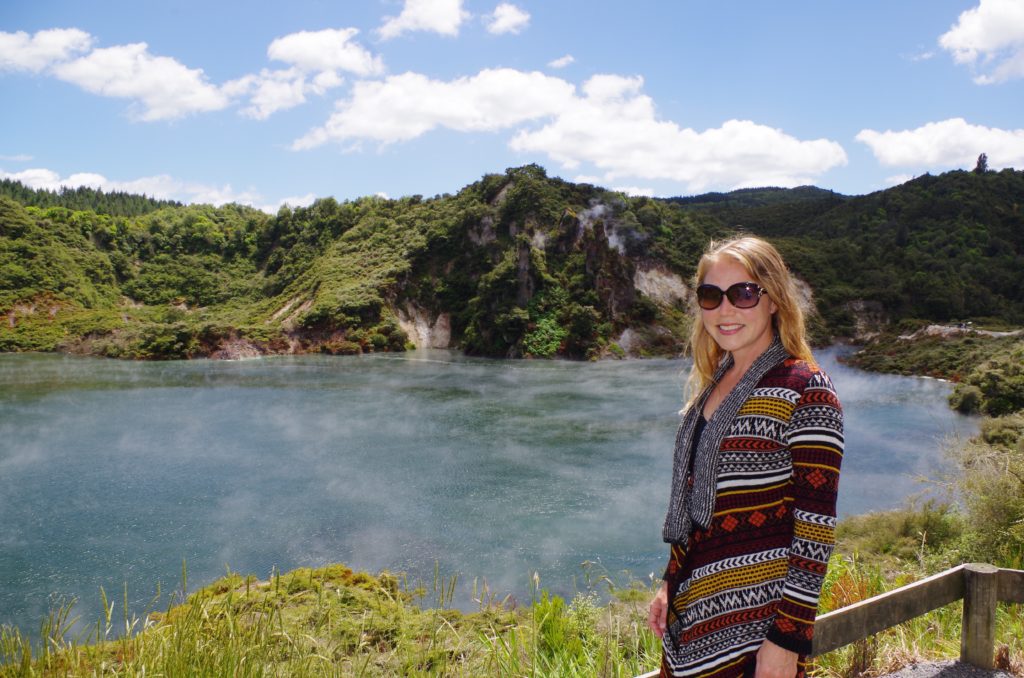
White Island Volcano
White Island is one of the world’s most active marine volcanos. What we see is just the tip; 70% of it is underwater. White Island Tours took us out to set foot on the volcano.
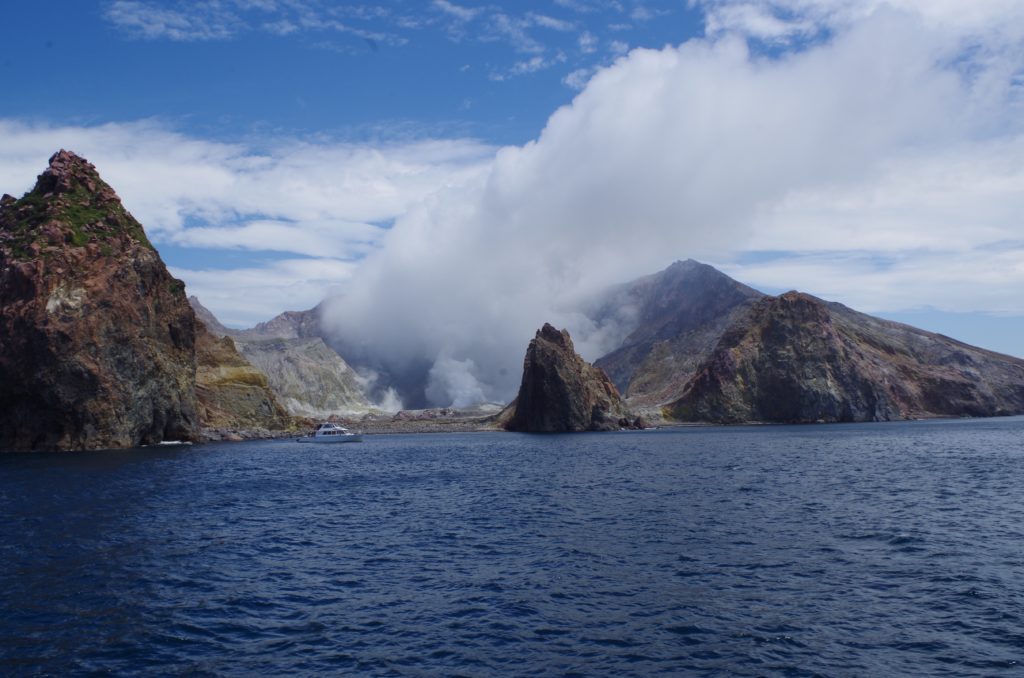
After about 1 ½ hrs at sea, we crawled into an inflatable boat to get to shore. We landed on Crater Bay and began our foot tour of the volcano. We were each given a gas mask and a yellow helmet (just in case the volcano decided to shoot out rocks at our heads). The escaping sulfur tickles your throat and can cause coughing, urging you to put on the gas mask.
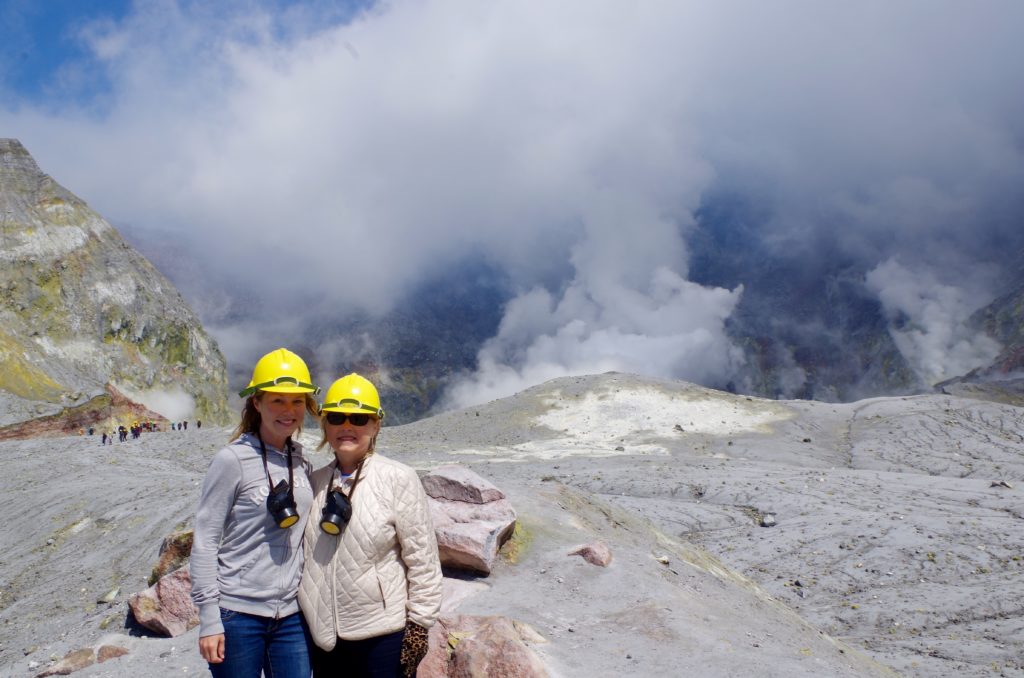
Huge plumes of smoke rise around you and various colors splatter the rocks. The yellow is sulphur, dark grey dirt is volcanic ash, white crystals are calcium sulphate, red-brown rocks are scoria, and white rocks are pumice
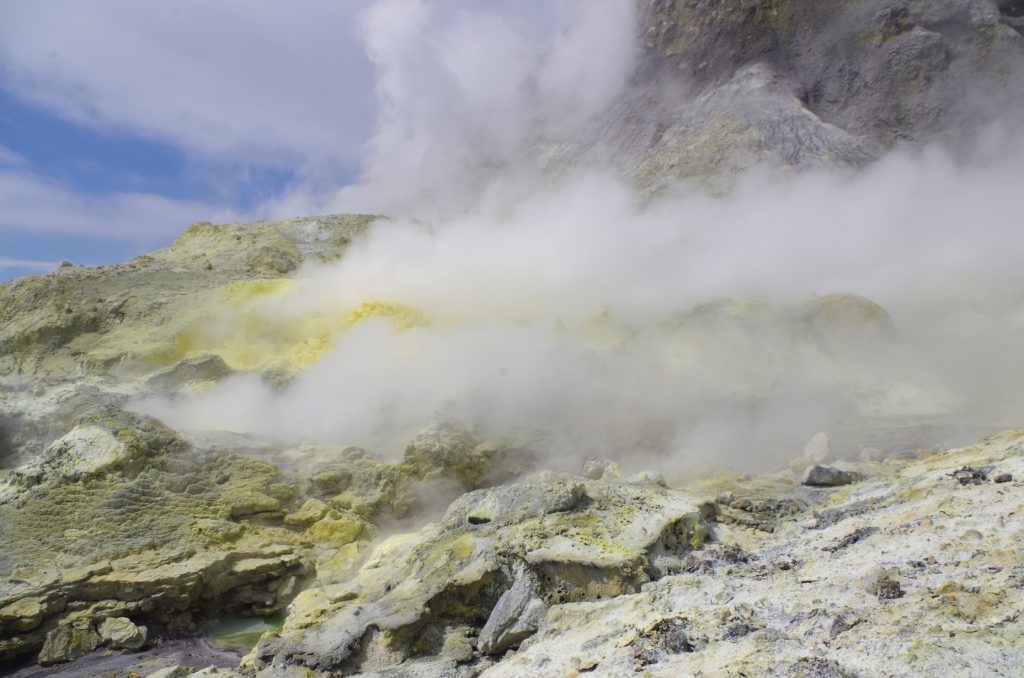
We walked straight towards the billowing smoke, advised to make sure we walked in the same path as the guides. There are many areas with just a crust over hot mud and steam which would be quite unpleasant to fall into. We approached the inner crater crest, keeping a safe distance away to take it all in. Deep inside lies a muddy looking pool and many smoking plumes.
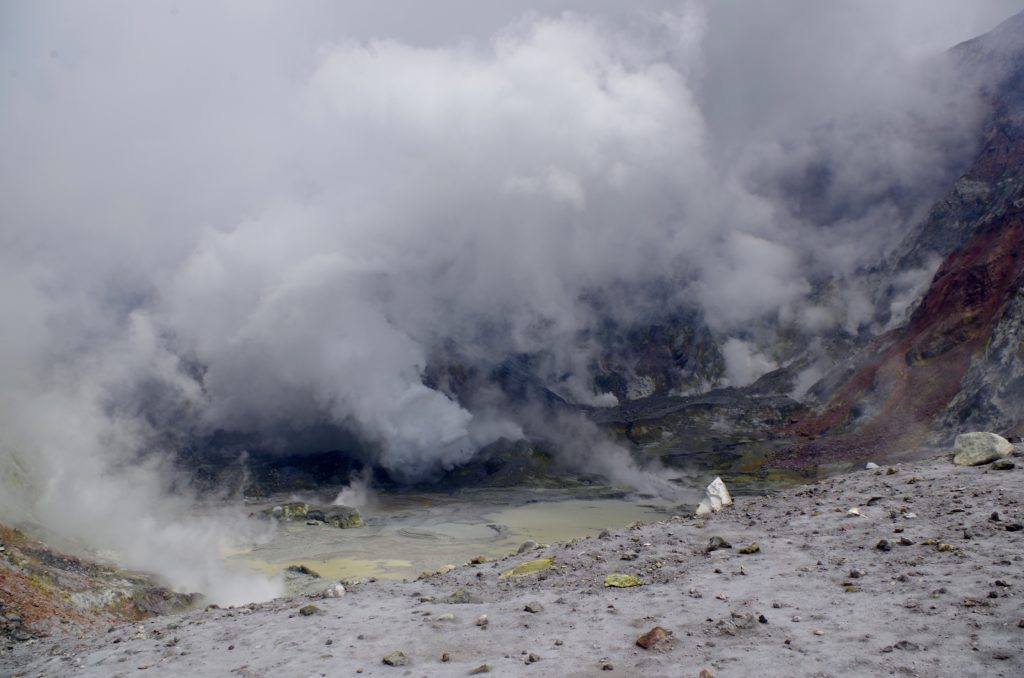
After leaving the main crater, we encountered a couple tiny streams heading out from the center. The first one was very warm, like a hot tub. We tasted the water and it tasted of iron. The second one was fairly cool and was citrus-like flavored. We were told how people tried to mine on this island for years until in 1914 the western crater rim collapsed causing a mudslide that destroyed the mine and village. Only the camp cat survived. There are skeletal remains from some 1920’s mining buildings still standing on the island.
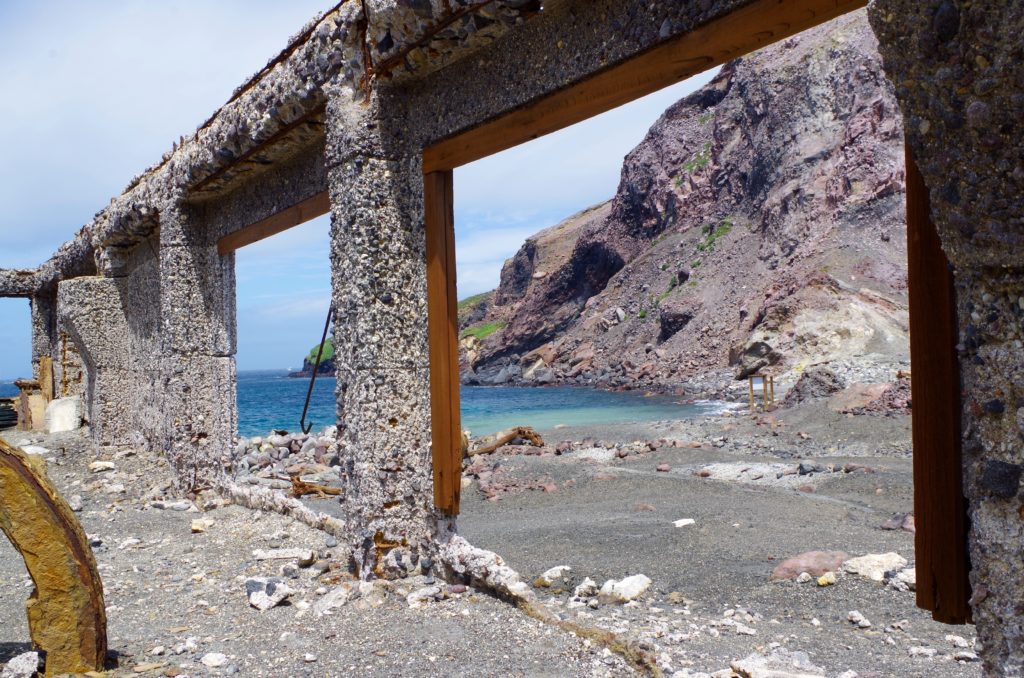
Helpful Hint: I recommend taking the first boat of the day, as the later ones are sometimes cancelled if the ocean waters get rough.
Tamaki Moari Village
We visited the Tamaki Maori Village to learn a bit about Maori culture. The Maori are the Polynesian natives of New Zealand who resided on this land for hundreds of years before Europeans arrived. They arrived sometime around the year 1250, relocating from somewhere in east Polynesia.
Once reaching the outer walls of the Maori Village, you watch the Maori arrive by boat on their stream.
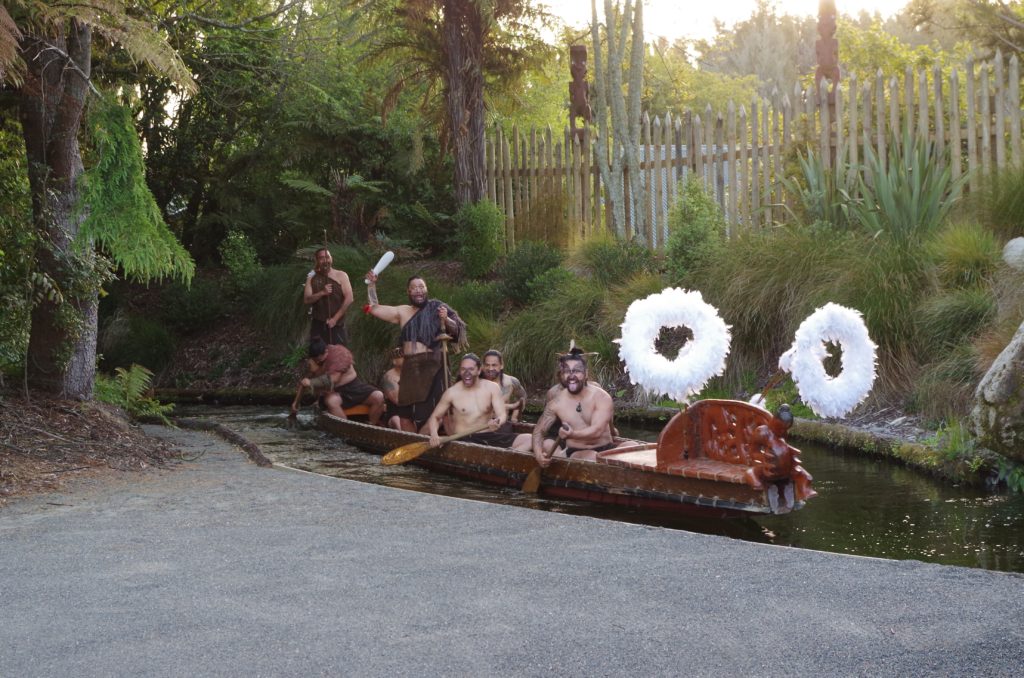
They dressed in traditional clothes and performed the ritual Challenge of Peace. This is quite interesting to watch as the Maori warriors went through intimidating movements, some involving their spears, until the peace offering was presented to the visiting tribe. They made intense expressions with their faces, even poking out their tongues throughout the ritual. After this and the Powhiri (formal welcome dance) has concluded, we are allowed to enter the village.
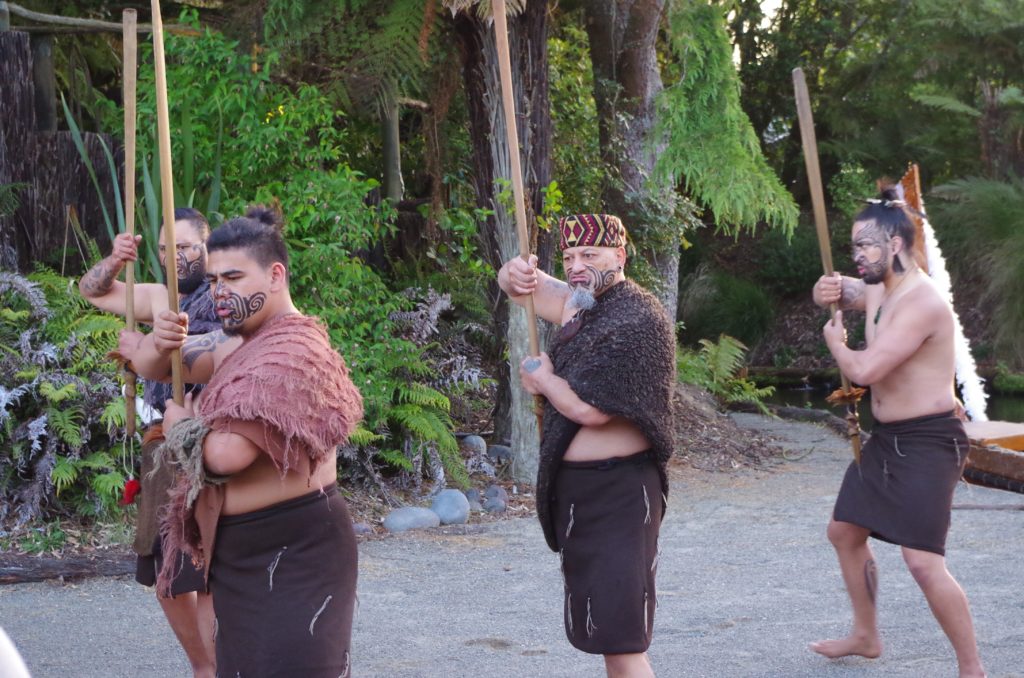
Inside we saw the village, games, and their traditional tattooed body art. They performed traditional dances and songs. Then we entered the dining hall and were served the traditional HANGI (feast cooked under the earth on hot rocks for 3-4 hours). While the tour is definitely touristy and a bit crowded, I really enjoyed getting a glimpse into their culture and history.
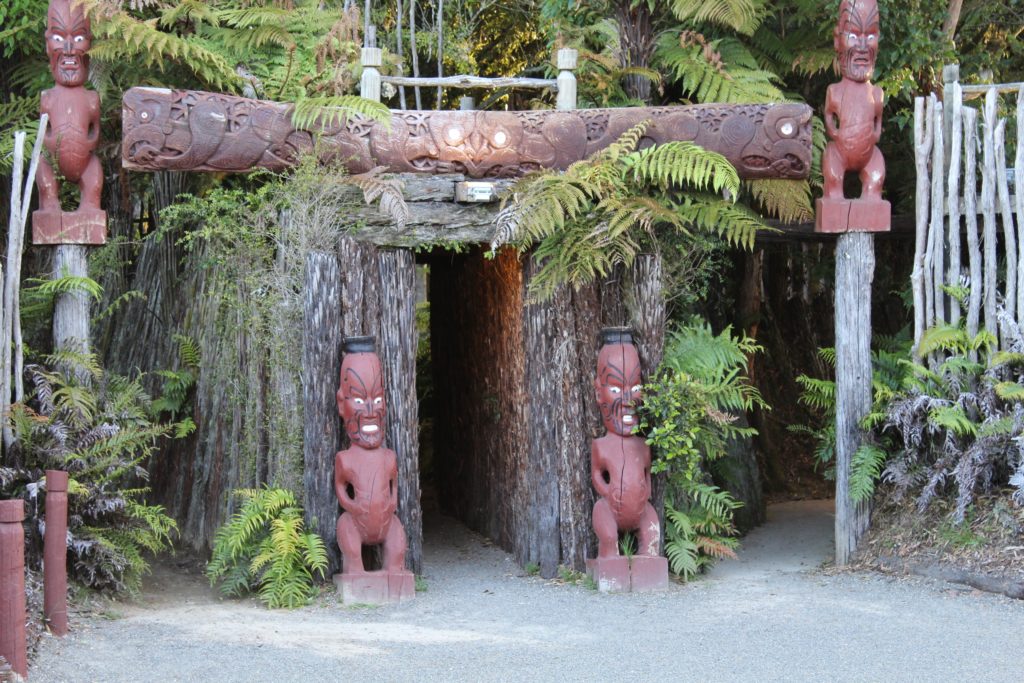
I strongly recommend visiting New Zealand. The North Island is unique with so much geothermal activity and the South is stunning due to it’s mountains, glaciers, and fjords. You can read about the South Island in my previous post: Racing Through New Zealand’s South Island in 7 days.
What a wonderful experience! New Zealand should be on everyone’s bucket list. Thanks for sharing.